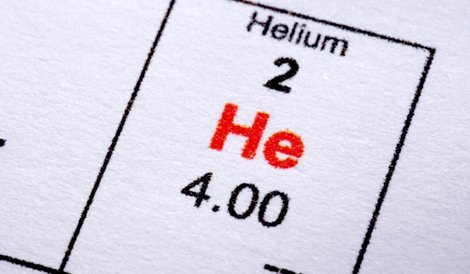With the explosion of data resulting from cloud computing, social networks, big data analytics and mobile devices, we hard drive manufactures continue to push HDD capacity limits to help large scale data centers manage explosive petabyte (PB) growth.
Back in the 1950s, when the hard disk drive (HDD) was first introduced, it was a far cry from the relatively compact devices that we see in the data center of today. They were the size of washing machines and stored mere megabytes of data. Fast forward to today, and who would have thought that six terabytes (6 TB) of information can now be stored on a standard 3.5-inch HDD?
However, even with this significant milestone, the demand for capacity in the data center is growing much faster than the HDD industry’s ability to deliver areal density growth. According to IDC, data center capacity rates are growing more than 40% per year, while HDD areal density growth rates have slowed to less than 20% per year from 2011 to 2016, creating a huge gap. And this is just the first challenge.
Beyond keeping up with ever-increasing storage demand, there are two other challenges taxing IT data center managers. One is the requirement to reduce the costs of acquiring storage capacity and servers, and then operating these systems for optimal efficiency. The second is to do all of this in the face of flat IT data center budgets.
To succeed, IT managers must deploy vast amounts of cost-effective storage that is optimized to deliver the best total cost of ownership (TCO) in terms of the greatest capacity and storage density at the lowest power usage and cooling cost. But even the fundamental metrics of TCO have shifted. TCO is no longer measured simply in terms of cost-per-TB. Increasingly, TCO represents a whole range of metrics from watt-per-TB, TB-per-system weight and TB-per-square foot.
The bottom line? With data center IT managers seeking out capacious and energy efficient storage solutions to reduce TCO, the reality is that today’s traditional, air-filled five platter HDD design has topped out.
So what’s next?
Helium. Compared to air-filled HDDs, the lower density of the sealed helium HDD provides immediate cost, capacity and TCO benefits in terms of lower power, cooling and increased storage density. Why? Helium is one-seventh the density of air. This inert gas produces less buffeting or disturbance on the rotating disks so now the internal hard drive platters can be thinner and placed closer together, thereby increasing capacity as more disks can now to fit into the same one-inch z-height stack. Seven disks – compared to the traditional five – can now be added (see the image below).
A sealed helium-filled drive simultaneously contributes to other important HDD benefits, including:
• Less weight per HDD by utilizing thinner disks
• Lower power consumption from reduced drag
• Less risk of humidity changes or contamination affecting drive reliability, which opens up new operating environments previously off-limits to HDDs
• Better Track Misregistration (TMR) due to reduced vibration on disk, arm and suspension
While the benefits of helium-filled drives have long been known, until now, no one could figure out a way keep the helium in the drive and prevent it from leaking. HGST’s helium breakthrough is in the product and process design, which hermetically seals the helium inside the HDD enclosure cost-effectively for volume manufacturing.
HGST’s R&D team has been studying the helium challenge since 2003 and successfully addressed these issues by applying lessons from aerodynamics research, enabling the company to dramatically increase disk capacity and improve TCO.
The graph below depicts the TCO improvements a sealed helium-filled drive offers when compared to a conventional air-filled disk drive.
Why new storage innovations matter
Today’s “hyper-scale” data centers -- where tens of thousands of servers each with petabytes (or even exabytes) of content host search, social, big data, online banking and retail applications - are all being designed under the assumption that operating expenses (OPEX) are just as critical to consider as capital expenses (CAPEX). This is changing the way IT managers think about storage.
Storage is no longer an interchangeable, one-size-fits-all commodity. It is increasingly the critical foundation that can affect both CAPEX and OPEX.
One of the most significant OPEX costs in data centers is power and cooling. New 6TB helium-filled hard drives offer 50% more capacity and use 23% fewer watts, delivering 49% better watts-per-TB than current five-platter, air-filled 4TB drives. This allows IT managers to get the best storage density, achieve low power and cooling costs, and free valuable headroom for other enterprise needs. For example, to scale to 11PBs using conventional 4TB 3.5-inch HDDs, the estimated amount of resources and equipment needed would be 240 enclosures, 2,880 hard drives, using 98.4 kilowatts (kw) power in 192 sq ft. With the 6TB helium-filled HDDs, however, those numbers reduce drastically. With the 6TB HGST Helium drives, it’s estimated that one would need 160 enclosures, 1,920 hard drives, using 62.4kw power in 128 sq ft. As you can see, using 6TB HDDs reduces the number of servers, racks, cables and networking gear, and helps IT managers save on related power and cooling costs while significantly increasing storage capacity.
Looking forward
With ever-increasing pressures on corporate and cloud data centers to improve storage efficiencies and reduce costs, helium HDDs are helping to improve data centre TCO on virtually every level – capacity, power, cooling and storage density – all in the same 3.5-inch form factor.
Helium shows us that although areal density growth may be slowing there are other ways to keep adding the capacity we all need.
The helium platform will be the foundation for the next 10+ years in HDD technology development. After the initial capacity boost that it is providing using today’s perpendicular magnetic recording, the helium platform will be used to complement newer advanced technologies such as HAMR (heat-assisted magnetic recording), SMR or Shingled Magnetic Recording, and BPM (bit patterned recoding) to further increase the areal density in the future.

